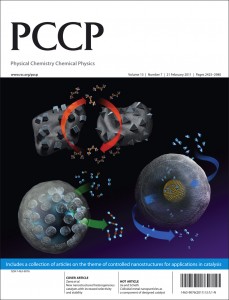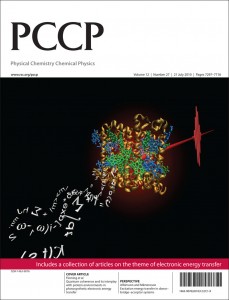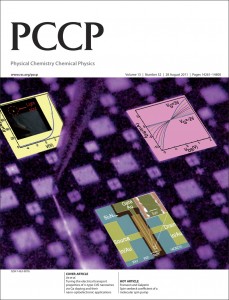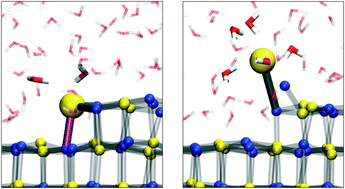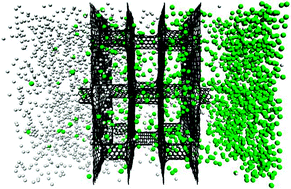This month sees the following articles in PCCP that are in the top ten most accessed in August:
Graphene-based electrochemical energy conversion and storage: fuel cells, supercapacitors and lithium ion batteries
Junbo Hou, Yuyan Shao, Michael W. Ellis, Robert B. Moore and Baolian Yi
Phys. Chem. Chem. Phys., 2011, 13, 15384-15402
DOI: 10.1039/c1cp21915d
Density functional theory for transition metals and transition metal chemistry
Christopher J. Cramer and Donald G. Truhlar
Phys. Chem. Chem. Phys., 2009, 11, 10757-10816
DOI: 10.1039/b907148b
Characterization of nanostructured hybrid and organic solar cells by impedance spectroscopy
Francisco Fabregat-Santiago, Germà Garcia-Belmonte, Iván Mora-Seró and Juan Bisquert
Phys. Chem. Chem. Phys., 2011, 13, 9083-9118
DOI: 10.1039/c0cp02249g
Titania supported gold nanoparticles as photocatalyst
Ana Primo, Avelino Corma and Hermenegildo García
Phys. Chem. Chem. Phys., 2011, 13, 886-910
DOI: 10.1039/c0cp00917b
Colloidal metal nanoparticles as a component of designed catalyst
Chun-Jiang Jia and Ferdi Schüth
Phys. Chem. Chem. Phys., 2011, 13, 2457-2487
DOI: 10.1039/c0cp02680h
Carbon materials for supercapacitor application
Elzbieta Frackowiak
Phys. Chem. Chem. Phys., 2007, 9, 1774-1785
DOI: 10.1039/b618139m
CVD graphene electrochemistry: the role of graphitic islands
Dale A. C. Brownson and Craig E. Banks
Phys. Chem. Chem. Phys., 2011, 13, 15825-15828
DOI: 10.1039/c1cp21978b
Recent progress in SERS biosensing
Kyle C. Bantz, Audrey F. Meyer, Nathan J. Wittenberg, Hyungsoon Im, Özge Kurtuluş, Si Hoon Lee, Nathan C. Lindquist, Sang-Hyun Oh and Christy L. Haynes
Phys. Chem. Chem. Phys., 2011, 13, 11551-11567
DOI: 10.1039/c0cp01841d
Electrocatalysis of oxygen reduction and small alcohol oxidation in alkaline media
Jacob S. Spendelow and Andrzej Wieckowski
Phys. Chem. Chem. Phys., 2007, 9, 2654-2675
DOI: 10.1039/b703315j
A thorough benchmark of density functional methods for general main group thermochemistry, kinetics, and noncovalent interactions
Lars Goerigk and Stefan Grimme
Phys. Chem. Chem. Phys., 2011, 13, 6670-6688
DOI: 10.1039/c0cp02984j
Why not take a look at the articles today and blog your thoughts and comments below.
Fancy submitting an article to PCCP? Then why not submit to us today or alternatively email us your suggestions.











